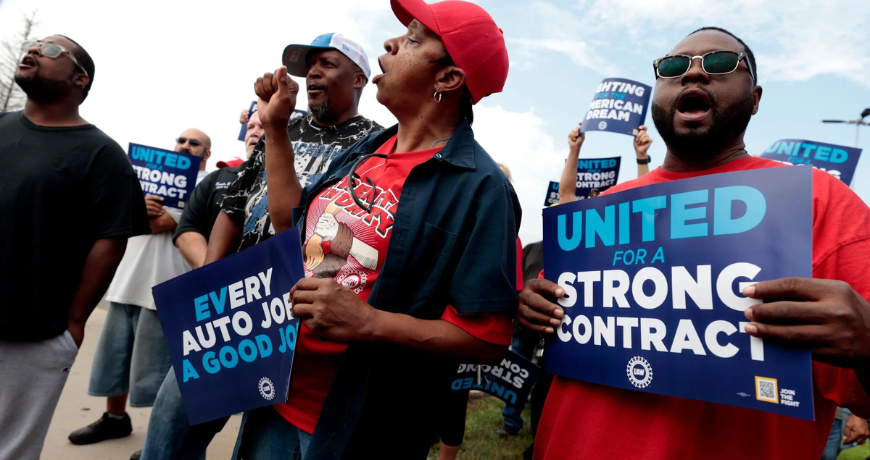General Motors Co. (GM) is establishing a $6 billion credit line to boost liquidity. The move comes as GM is potentially preparing for a prolonged strike at U.S. plants that could further deplete its finances. As of September 30, the ongoing strike has cost the Detroit-based automaker $200 million, according to a company spokesperson, Crains Detroit reported.
In a securities filing announced early Wednesday, GM disclosed its intention to secure this 364-day revolving credit line to maintain “operational flexibility.” While GM had a total automotive liquidity of $38.9 billion as of June 30, this new line of credit suggests that GM is anticipating a prolonged work stoppage by the United Auto Workers (UAW).
The current industrial action has significantly impacted GM’s operations. On Friday, the UAW strike led to the closure of GM’s Lansing Delta Township assembly plant, responsible for producing the Chevrolet Traverse and Buick Enclave crossover SUV models. Moreover, on September 15, a Missouri plant that manufactures the Chevy Colorado and GMC Canyon mid-size pickups was also affected by the strike. The repercussions of the UAW strike are not limited to GM alone; rival companies Ford Motor Co. and Stellantis NV are also feeling the heat.
On Tuesday, Ford Motor Co. conveyed its latest offer to the UAW, which included “unprecedented” pay raises. This proposal, which was the seventh since the onset of contract negotiations this summer, was presented following the UAW’s call for a walkout at Ford’s Chicago Assembly Plant on September 15. According to Crains Detroit, Jim Farley, Ford CEO, stated, “There’s no doubt our UAW workforce put us on their shoulders during the pandemic…We’ve put an offer on the table that will be costly for the company…but one that we believe still allows Ford to invest in the future.”
The offer from Ford consists of a 26% pay hike for temporary workers, raising their hourly rate to $21, and an unspecified raise for most full-time workers, which would be “more than” the previously offered 20% over four years. Additionally, Ford has proposed to reduce the time for new hires to reach top wages by more than half.
In the current scenario, Ford expressed its continued interest in potential collaboration with the UAW on U.S.-based battery plants. Yet, it emphasized the necessity for these multi-billion-dollar ventures to operate at “competitive and sustainable levels.”
Amid these developments, negotiations continue across all three automakers. Approximately 25,000 of their employees remain on strike. As for GM, the company had a comprehensive discussion with UAW leaders on Monday, marking the first major interaction in 11 days. However, according to Crains Detroit, a company spokesman says, “significant gaps remain.” Stellantis also met with UAW representatives on Monday, as per union sources.

